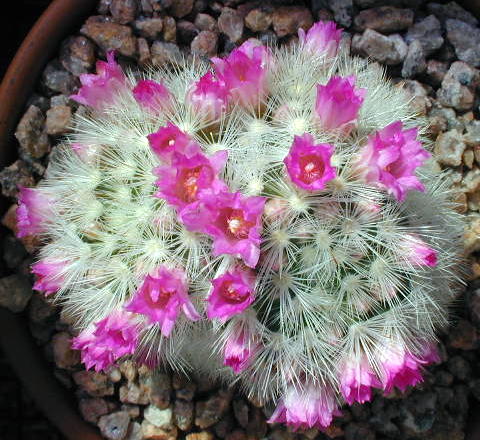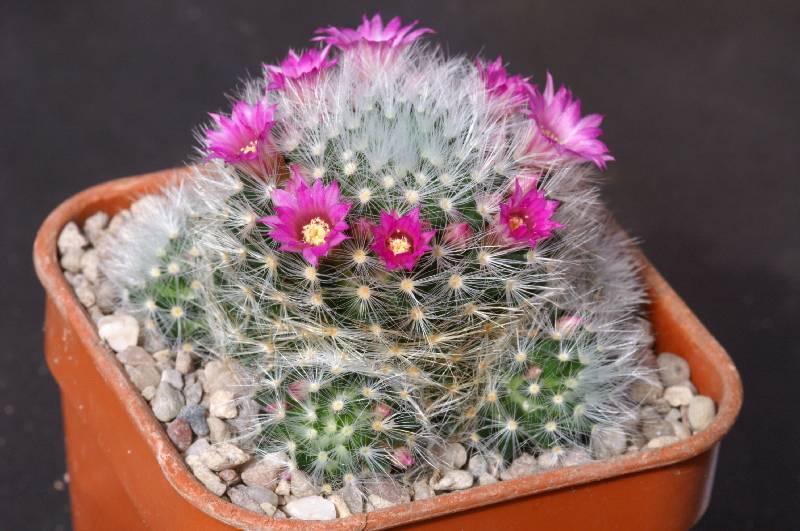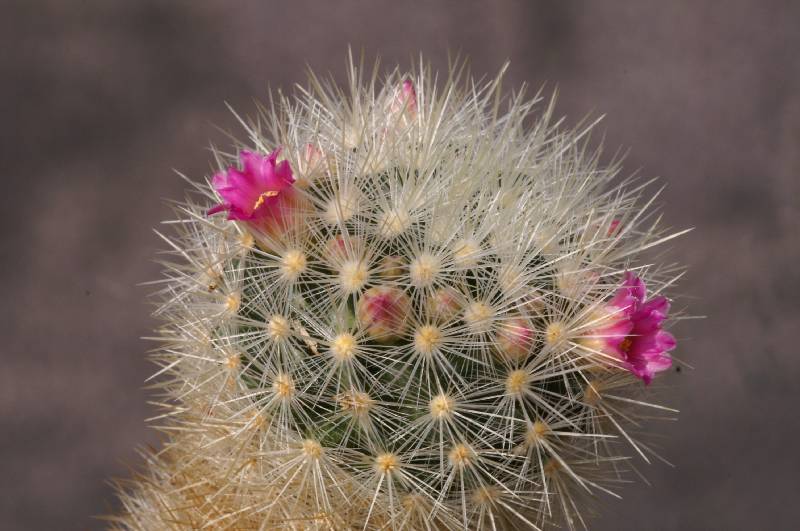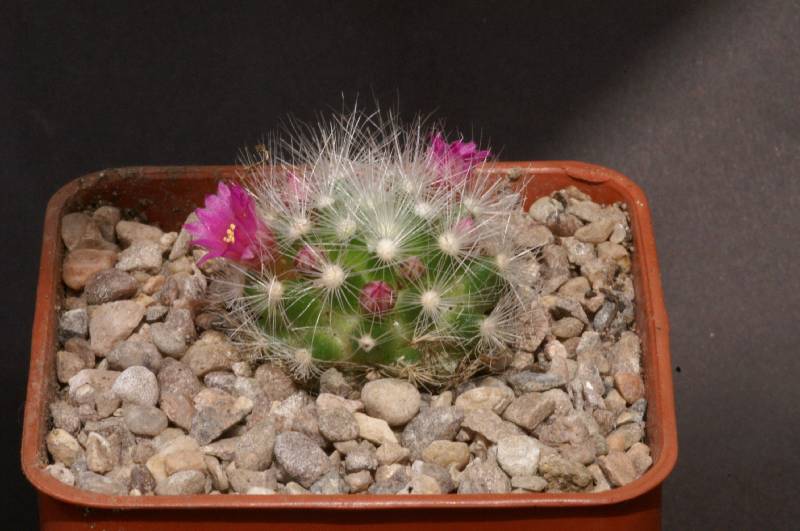
Photo: Courtesy of Mammillarias.net

Photo: Copyright - Chris Davies 2007

Photo: Copyright - Chris Davies 2007

Photo: Copyright - Chris Davies 2007
Mammillaria lauii ssp subducta
Mammillaria lauii sp nova L1496
Mammillaria of the Month
(click here for previous Mamms of the Month)
M. lauii and its forms
|
Photo: Courtesy of Mammillarias.net |
Photo: Copyright - Chris Davies 2007 |
|
Mammillaria lauii ssp. lauii
|
Mammillaria lauii ssp. dasyacantha
|
 Photo: Copyright - Chris Davies 2007 |
 Photo: Copyright - Chris Davies 2007 |
|
Mammillaria lauii ssp subducta |
Mammillaria lauii sp nova L1496 |
Mammillaria lauii is one of the prettiest of Mammillarias, its bright pink flowers contrasting beautifully with the mostly white spines. It was found by Dr Alfred Lau in whilst looking for another Mammillaria species, M. carmenae. They all come from the Mexican state of Tamaulipas, and all from the roughly same location, between Ciudad Victoria and La Reja, Jaumave. They differ in habitat in that they appear to come from differing altitudes, with ssp. subducta being found at lower altitudes, then ssp laui as one gets higher, and ssp. dasyacantha towards the top of the habitat range. The L1496 plant comes from Novillo Canyon at an even higher altitude, between 1600 and 2000 metres. The plant of this species shown above is still rather young, but it will cluster in time like the others in the family.
As collection plants, they are all highly rewarding, their yellowish (ssp. subducta) to white (the others) spination contrasts wonderfully with the bright pink flowers, and when the plants form large clumps, as they will, up to 30cm across, in full flower they really are a sight to be seen. The spination varies with the subspecies, ssp. subducta spines are thicker, and probably L1496 the finest, almost hairlike. This is in keeping with the altitude ranges of the subspecies.
A lot has been written about the hybrids that are reported between M. lauii and M. carmenae. Even Dr Lau himself is reported as saying that there are natural hybrids, and he himself mixed up several seed lots, thereby giving rise to there being pink flowered plants incorrectly named under M. carmenae. Other stories abound, but whatever the truth, there are some spectacular plants bearing spines like M. carmenae, although much whiter, and flowers like M. lauii, whether from habitat collected seed or by nursery cross-breeding. The picture below perhaps is a good illustration of this, in an 20cm bowl.
Photo: Copyright - Chris Davies 2007
Mammillaria lauii x carmenae